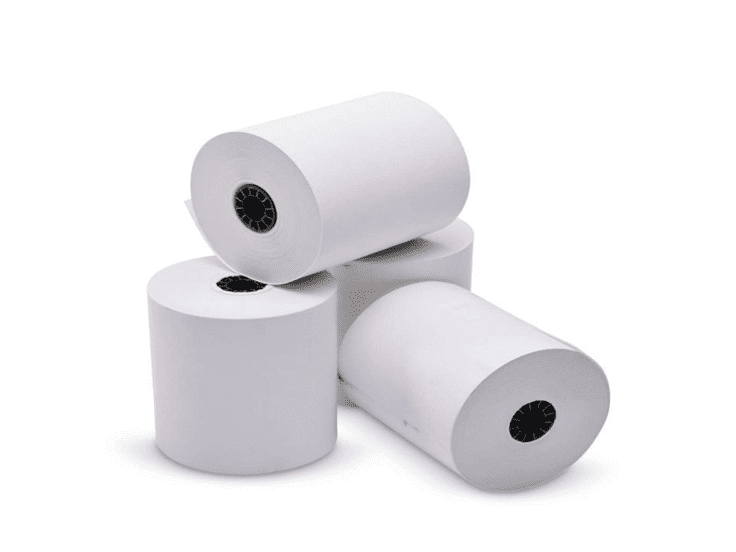The Role of Printed Thermal Paper Rolls in Modern Transaction Systems
- Raghav jain
- Dec 17, 2024
- 4 min read

In today's fast-paced business world, transactions are constantly being processed at high speeds. From grocery stores and restaurants to banks and ticketing systems, printed receipts, invoices, and tickets are a common occurrence. While businesses rely on digital systems, they also require printed documentation to complete transactions, ensure accuracy, and provide customers with proof of purchase. One essential component that powers this process is printed thermal paper rolls.
Printed thermal paper rolls have become a cornerstone of modern transaction systems due to their affordability, efficiency, and ease of use. This article explores the crucial role printed thermal paper rolls play in business operations and their advantages in a variety of industries.
What are Printed Thermal Paper Rolls?
Printed thermal paper rolls are a type of paper specifically designed to be used in thermal printers. Unlike traditional ink-based printing, thermal paper does not require ink cartridges. Instead, the thermal printing process involves the use of heat to activate a special coating on the paper, which changes color to produce text or images.
Thermal printers are widely used in many industries, from retail and hospitality to transportation and healthcare, making printed thermal paper rolls an essential tool for businesses around the world.
1. Efficiency in Transaction Processes
Printed thermal paper rolls are commonly used for point-of-sale (POS) printing. Whether in retail environments, service counters, or medical facilities, these rolls provide a fast and efficient way to produce receipts, invoices, and other transaction-related documentation. Thermal printers deliver high-quality prints at incredible speed, reducing the time spent waiting for receipts and improving the customer experience.
Since printed thermal paper rolls do not require any ink or toner, printing processes are streamlined, meaning fewer maintenance tasks and lower operating costs for businesses. This efficiency translates to faster transaction handling, increased customer satisfaction, and better resource management.
2. Cost-Effective Solution
Businesses are always on the lookout for ways to reduce overhead costs, and thermal paper plays a vital role in that objective. Printed thermal paper rolls are highly cost-effective because they eliminate the need for expensive ink or toner cartridges. Thermal printers only require the paper itself, which reduces the overall maintenance cost compared to ink-based printing systems.
Moreover, printed thermal paper rolls are available in various sizes and thicknesses, making them adaptable to the needs of different types of transactions. Retail businesses, in particular, can take advantage of thermal paper’s low cost and reliability to keep their printing expenses manageable.
3. Enhanced Durability and Reliability
One of the advantages of printed thermal paper rolls is their durability. Unlike conventional printed receipts that can fade over time, high-quality thermal paper is specially coated to prevent deterioration. Printed thermal paper rolls provide receipts that are both weather and handling resistant, which is especially important for industries requiring proof of purchase or legal documentation.
For instance, in food services, airlines, and transportation industries, the longevity of printed receipts on thermal paper rolls ensures that customers retain their proof of transaction for extended periods without worry of fading. Additionally, businesses need not worry about costly printer repairs or replacements, as thermal printing technology is well-regarded for its long-term reliability.
4. Eco-Friendly Advantage
In recent years, sustainability has become a focal point for both consumers and businesses. Traditional receipt printing, especially with ink-based technologies, can produce waste through ink cartridges and the use of more chemically treated paper. In contrast, printed thermal paper rolls are more environmentally friendly.
Modern printed thermal paper rolls have been produced with minimal environmental impact. For instance, businesses can find BPA-free (bisphenol A) thermal paper, which makes it safer for both human health and the environment. The paper itself is biodegradable, reducing the impact on landfills compared to traditional print methods.
Many businesses have also adopted thermal paper as part of their green initiatives, further driving down their environmental footprint while retaining the speed and efficiency needed for day-to-day operations.
5. Space-Saving and Easy Storage
Printed thermal paper rolls are typically compact and easy to store. Whether it's in a retail or restaurant setting, the small size of thermal paper rolls allows businesses to store large quantities without taking up valuable space in the workplace. Compared to traditional paper printer systems, which can require substantial storage space for ink cartridges, printed thermal paper rolls are more space-efficient.
Additionally, the rolls themselves are user-friendly, typically available in single or small multi-roll packaging. Most thermal printers are designed to be easily reloaded, ensuring smooth operations without interruption.
6. Versatility Across Various Industries
One of the primary reasons printed thermal paper rolls have become so widespread is their versatility. They are used in countless applications beyond retail businesses:
Restaurants & Cafes: Used for kitchen tickets, receipts, and order slips.
Banks & Financial Institutions: Issuing transaction slips, withdrawal receipts, and bank statements.
Public Transport: For issuing tickets and boarding passes in trains, buses, and airplanes.
Healthcare: To print patient labels, prescriptions, and invoices.
The reliable performance of printed thermal paper rolls helps industries maintain accuracy and improve their workflow in high-transaction environments.
7. Improved Customer Experience
Customer satisfaction hinges on a fast, reliable transaction process, and printed thermal paper rolls play a key role in ensuring this. With thermal printers producing instant, legible receipts without any lag, customers experience quick and efficient service, enhancing their overall shopping or service experience.
Additionally, printed receipts are easy for customers to store, ensuring they have a record of their purchase for returns, exchanges, or expense reporting. For service-oriented industries, printed thermal receipts also make it easier to convey essential details like order numbers, time of transaction, and product information.
8. Seamless Integration with Modern Point-of-Sale Systems
Finally, printed thermal paper rolls integrate seamlessly with most modern POS systems, including tablet-based POS setups. This ensures that businesses can employ cutting-edge technologies while still benefiting from a reliable and efficient printing solution. Thermal printers work alongside cloud-based POS solutions, providing businesses with the necessary tools to handle modern transactions efficiently, securely, and consistently.
Conclusion
In conclusion, printed thermal paper rolls are an indispensable element in modern transaction systems. They enable businesses to streamline their transaction process, lower operating costs, maintain durability, and deliver an environmentally conscious solution. From retail counters to hospitals and transportation, thermal printing technology has become a trusted method for printing receipts, tickets, invoices, and more.
As businesses continue to modernize their operations and adopt more sustainable practices, printed thermal paper rolls will remain at the forefront of ensuring efficiency, cost savings, and customer satisfaction in the ever-evolving world of transactional documentation.
4o mini



Comments